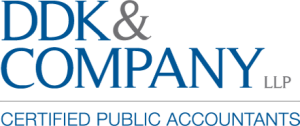
NJ Temporarily Increases CBT Rate & other Corporate Tax Changes
New Jersey enacts Corporate tax legislation that provides for: (1) temporary increases to the corporation business tax rate; (2) mandatory combined reporting; (3) sourcing of services; (4) a reduced dividend exclusion for IRC 965 dividends; (5) other changes.
Temporary increases to the corporation business tax rate. Taxpayers, except for public utilities, with allocated net income in excess of $1 million for the 2018 and 2019 tax years will be charged a surtax of 2.5%. Taxpayers, except for public utilities, with allocated net income in excess of $1 million will be charged a surtax of 1.5% for the 2020 and 2021 tax years.
Mandatory combined reporting. Combined return filings: Effective for tax years beginning after 2018, a combined group must file a combined unitary tax return in the form and manner prescribed by the Division of Taxation. The managerial member of the combined group must file the combined unitary tax return on behalf of the taxable members of the combined group and must pay the tax on behalf of such taxable members.
- The term “combined group” refers to the group of all companies that have common ownership and are engaged in a unitary business, where at least one company is subject to the corporation business tax.
- The term “common ownership” means that more than 50% of the voting control of each member of a combined group is directly or indirectly owned by a common owner or owners, either corporate or non-corporate, whether or not the owner or owners are members of the combined group.
- The term “unitary business” refers to a single economic enterprise that is made up either of separate parts of a single business entity or of a group of business entities under common ownership that are sufficiently interdependent, integrated, and interrelated through their activities so as to provide a synergy and mutual benefit that produces a sharing or exchange of value among them and a significant flow of value among the separate parts. The term “unitary business” will be construed to the broadest extent permitted under the Constitution of the United States.
Sourcing rules modified. For tax years beginning after 2018, sales of services will no longer be sourced based on where the services are performed. Under the new law:
- If the benefit of the service is received at a location in New Jersey, the receipts are sourced to New Jersey.
- If the benefit of the service is received both at a location within and outside New Jersey, the portion of the sale that is allocated to New Jersey is based on the percentage of the total value of the benefit of the service received at a location in New Jersey or a reasonable approximation to the total value of the benefit of the service received in all locations both within and outside New Jersey.
- If the state or states of assignment of services cannot be determined for a customer who is an individual that is not a sole proprietor, the benefit of the service is deemed to be received at the customer’s billing address.
- If the state or states of assignment of services cannot be determined for customers other than individuals, the service is deemed to be received at the location from which the services were ordered in the customer’s regular course of operations.
- If the location from which the services were ordered in the customer’s regular course of operations cannot be determined, the benefit of the service is deemed to be received at the customer’s billing address.
Dividend exclusion. For the privilege period beginning after December 31, 2016, entire net income excludes 95% of dividends which were included in computing such taxable income for federal income tax purposes, paid or deemed paid, to the taxpayer by one or more subsidiaries owned by the taxpayer to the extent of the 80% or more ownership of investment. For the purposes of calculating the tax liability owed for the deemed dividends included in entire net income, i.e., the IRC § 965 dividends, the taxpayer will use either their three year average allocation factor for the taxpayer’s 2015 through 2017 tax years reported on the taxpayer’s tax returns or 3.5%, whichever is lower.
For privilege periods beginning after 2017, entire net income will exclude 95% of dividends which were included in computing such taxable income for federal income tax purposes, paid or deemed paid to the taxpayer by one or more subsidiaries owned by the taxpayer to the extent of the 80% or more ownership of investment.
Penalties and interest. No penalties or interest will accrue for underpayment of tax for the provisions applying retroactively to tax years beginning on or after January 1, 2017, that create an additional tax liability. However, the additional payments must be made by either the second next estimated payment subsequent to the enactment or by the first estimated payment due after January 1, 2019 for tax years beginning on or after January 1, 2018.
Research and development credit. For tax years beginning after 2017, the law has been modified to provide that this credit is not refundable.
